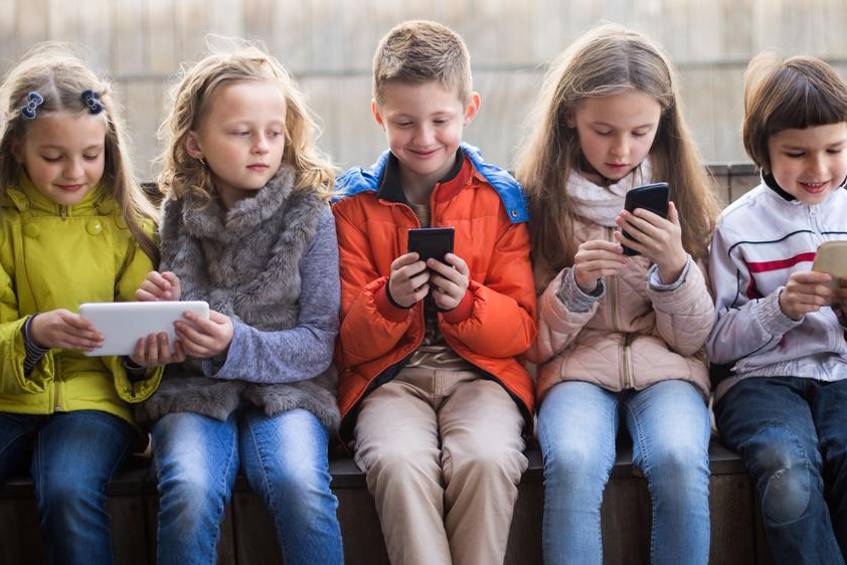
The human eye is not designed to stare at screens for hours. But children and young people spend more and more time on Smartphone & Co. Recent studies warn of the consequences – but small tips help to relieve the eyes.
From the office life of many adults, eye and vision problems are known. They are grouped together under the term Computer Vision Syndrome ( CVS ). The constant fixation of the screen in the same direction and distance leads to an overstraining of the eye muscles. The result: The vision is blurred, the eyes dry out and feel irritated.
Above all, the eye lacks natural light
In particular smartphones are often used eye-dangerously close due to the very small letters, pictures and icons. In addition, smartphones are mostly in continuous use, especially among children and adolescents. As a result, they are particularly at risk of developing myopia. If the eye is too rarely exposed to natural light or too often focused on near vision, an excess of the eyeball may arise. This leads to myopia (myopathy).
The extent to which long-term use of smartphones can be assumed can be observed in Asia : within a few decades, the number of short-sighted people in countries such as South Korea , China and Taiwan has risen sharply. Research in South Korea found that more than 96% of all 19-year-olds had at least minus 0.5 diopters. Already one in five was severely short-sighted with at least minus six dioptres. Therefore, in Taiwan since 2012, it is mandatory for schoolchildren to go outdoors for two hours each day. This measure is successful because within three years the rate of short-sighted first graders dropped from 50% to 45%.
Study shows: One third of adolescents have complaints
Even in Germany, people under the age of 18 are particularly likely to experience problems related to the use of smartphones and the like, as a representative study by Apollo shows . More than a third (34%) of young people complain about physical complaints such as tension, neck and back pain or headaches. Of these, 28% already have difficulty with their eyes. Internal sales figures of the optician chain confirm the results of the study: Since the introduction of Apple’s first smartphone in 2007, the number of eyeglasses sold to children and adolescents increased by 50%.
The smartphone can also be used smart with a few simple tips for the eyes: the reading distance should not be less than 30 to 40 centimeters. It is important to take regular breaks. The best thing every ten minutes, the gaze should be directed away from the screen, as the ophthalmologist Prof. Dr. med. Wolf Lagrèze from the University Medical Center Freiburg advises. It helps to look out of the window for at least 20 seconds and to aim at more distant points.
Tips for relaxed eyes
It is also always possible to switch between distance and near vision, as this relaxes the eye muscle. Likewise, frequent winking is important to moisten the eyes sufficiently. If longer texts have to be read, a larger screen should definitely be used.
Digital devices should only be used with sufficient illumination, recommends Julia Kempe of Apollo – because the artificial light in a dark environment can permanently affect the growth of the eyeball. Especially important: Children should spend as much time, but at least two hours, in the daylight outdoors, so Kempe on. Because daylight helps the eye to prepare for shortsightedness. To detect problems early, it makes sense to check children’s eyes regularly with the ophthalmologist. Only then can vision problems be detected early and corrected by the optician.

